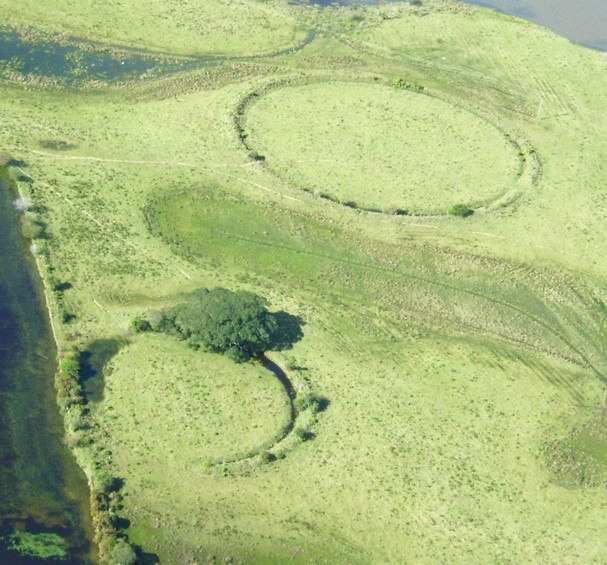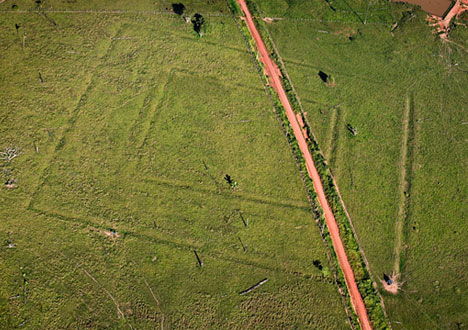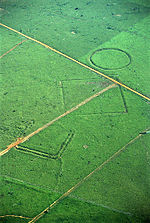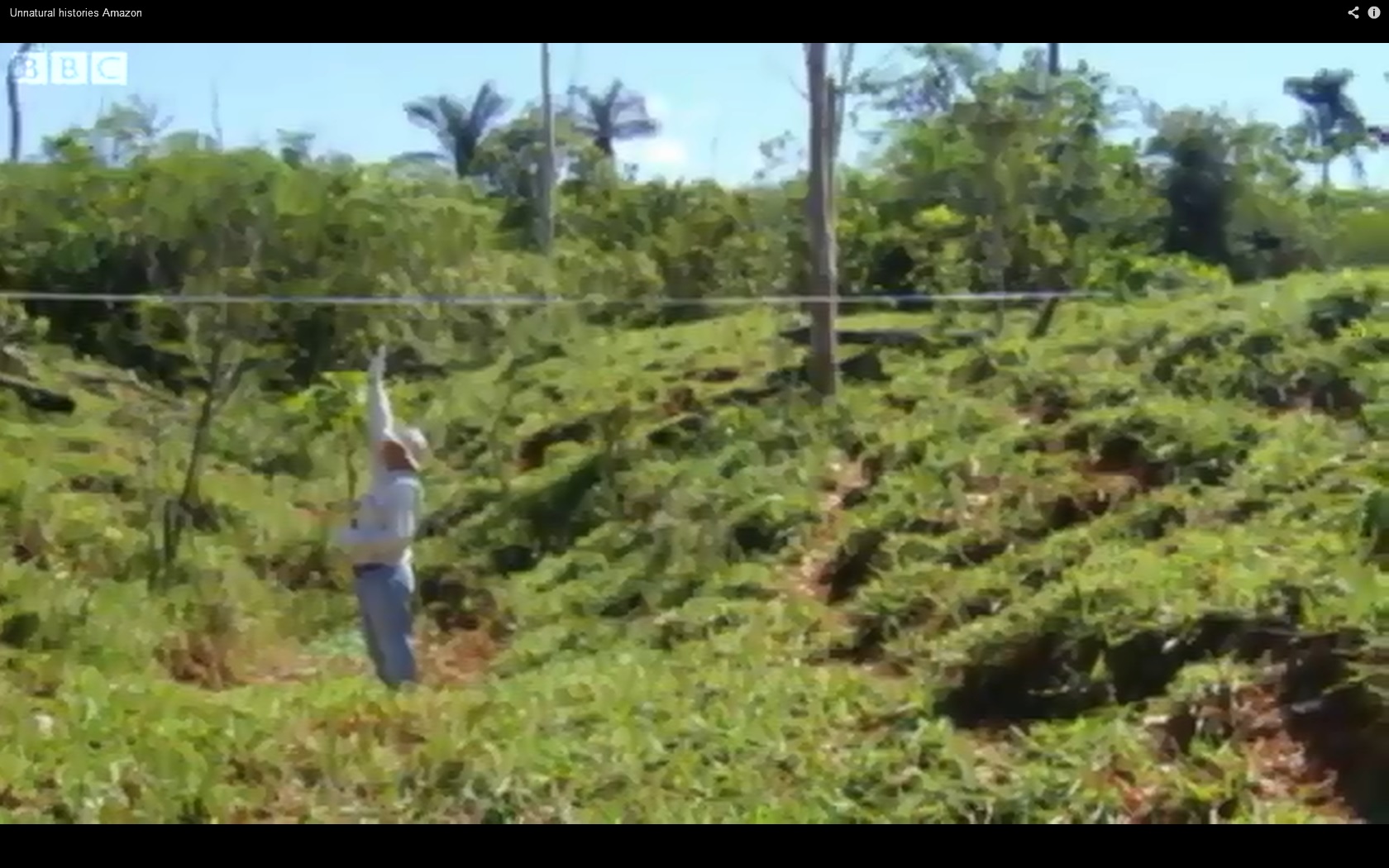It looks like you're using an Ad Blocker.
Please white-list or disable AboveTopSecret.com in your ad-blocking tool.
Thank you.
Some features of ATS will be disabled while you continue to use an ad-blocker.
share:
Originally posted by purplemer
reply to post by colin42
Not all people can watch a video. If possible a blurb about the video is helpful. I based my reply on the written text in your OP. The information you supplied.
When I commented that humans have not been around as long as the rainforest you tell me to watch the video. Can you not counter argue yourself and tell me why I am wrong. I cannot watch the video..
You make a fair point. I dont think I told u personally to watch it tho, did I? O.o Anyway, ye, I was typing the whole thing out on a touchscreen in the middle of the night, using just what I thought was the msot important parts, as typing on that thing takes AGES:p
I'll see if I can find a net cafè and type out a full synopsis soon (which I probably should have done in the first place, I just found it too exciting not to share asap:p), allthough Fimbulvetr has already provided a quite good one. (thanks for that bytheway!)
Have a good saturday people!
Originally posted by Harte
The "artificial" soil has been discussed here before. No one is ignoring it. We're just not accepting exaggerations about it.
Note the title of the thread. Are we not to take it, then, that the OP is espousing the possibility that the Amazon Rain Forest is some ancient arboreal argricultural project?
Regarding pot shards, that's part of what "anthropogenic" means.
Harte
Odd choice of words, but yes, you could say that I'm married to the POSSIBILITY that the forest COULD BE man made. Thats why I made it quite clear that I was speculating, I.e, considering the idea, and even asking the opinions of the people who bothered to check out the links..
There's even a questionmark in the title!
Anyway, can we just move on and keep it on topic and civillized from now on?
edit on 9-3-2013 by Fjernt because: spelling
Originally posted by Fjernt
reply to post by Byrd
Fair point indeed, but didnt the egyptians maintain their agricultural land by the river nile for about a thousand years?
Yes and no. The Nile valley was already fertile from the floods (similar to many areas of the Amazon basin and similar to any land along a floodplain. They could farm it for a long time because the floods enriched the land. In the years when the Nile flood was lower than a certain minimum, they would have very little grain and if the period continued for awhile, starvation.
Did you guys watch the documentary that was already linked twice in this thread, before commenting?
As at least one other has said, some of us don't have the time to watch videos. Videos are weak evidence because you can't find their sources easily and doublecheck their facts (I hate having to watch a segment five or six times to get a name and a source.)
MY source is from the citizen science program that certifies you (me in this case) as a Texas Master Naturalist. We studied forestry and blackland prairies (and other prairies) and had a rather long set of lectures on soils, soil profile, how they were created, remediation, and all like that. (if you're curious you can take a peek at some of what we covered at this link)
I also had to know about soils and soil depth and composition when I did both paleo digs (dinosaurs) and when I did archaeological digs. The archaeologists really got into soil details, let me tell you.
The Amazon really IS natural... but giving you all the minute details and showing you the evidence would take a lot of time. If you're interested in this, you might start by reading the material at that link I just gave.
reply to post by Fjernt
I should add that there ARE manmade soils in the Amazon (made from about 400 BC to about 800 AD) but that they're less than 1% of the area of the forest. (Wikipedia link)
I should add that there ARE manmade soils in the Amazon (made from about 400 BC to about 800 AD) but that they're less than 1% of the area of the forest. (Wikipedia link)
reply to post by Byrd
I was thinking of the canals they dug along the nile to ensure a steady watersupply.
It is nice to know that you really do know what you are talking about, and your input is much appreciated. But even though wikipedia says it is less than 1%, this video covers some new evidence, i.e. the vast amount of geoglyphs uncovered in what was previously thought to be pristine rainforest. They range from 2000 to 750 years old, so that gives us 1250 years that this civilization was apparently active.
What do you say about the pottery used in the black soil?
They have discovered more than a thousand already, some of which are amazingly complicated. Most of them are also connected by "roads". They are at the moment about 2 meters deep, and 5-6 meters wide. Which is to say, that at the time of their creation, they were atleast twice as deep, if not more. In the video it is also speculated, from what is remaining of the forest, that this is just the tip of the iceberg.
Some experts even say the people who created them could have numbered in the millions (5-6 even).
Here are some photos for your consideration.



And heres a still from the doc.

I was thinking of the canals they dug along the nile to ensure a steady watersupply.
It is nice to know that you really do know what you are talking about, and your input is much appreciated. But even though wikipedia says it is less than 1%, this video covers some new evidence, i.e. the vast amount of geoglyphs uncovered in what was previously thought to be pristine rainforest. They range from 2000 to 750 years old, so that gives us 1250 years that this civilization was apparently active.
What do you say about the pottery used in the black soil?
They have discovered more than a thousand already, some of which are amazingly complicated. Most of them are also connected by "roads". They are at the moment about 2 meters deep, and 5-6 meters wide. Which is to say, that at the time of their creation, they were atleast twice as deep, if not more. In the video it is also speculated, from what is remaining of the forest, that this is just the tip of the iceberg.
Some experts even say the people who created them could have numbered in the millions (5-6 even).
Here are some photos for your consideration.



And heres a still from the doc.

edit on 9-3-2013 by Fjernt because: Added the still
Wow, thanks OP! This is definitely going to the top of my to-watch list. S&F.
Until then, I don't think the whole rainforest could have been man made. It is certainly possible that they improved the soils to speed of the process of plant succession so that the area can reach its climax more quickly. Ecological equilibriums are hard to make by human effort alone, after all. There are so many factors to control and stuff. Nature, on the contrary, does that naturally over time.
reply to post by Byrd
Er, but the Amazon's soils are not supposed to be fertile. Rainforests have gigantic biomass; nutrients are uptaken very quickly after decomposition and there's no way for the soil to stay fertile. Most of the nutrients are stored in the biomass and not the soil. I think the soil fertility only shows that this soil is amazing.
Edit: Just saw that has already been pointed out.
Until then, I don't think the whole rainforest could have been man made. It is certainly possible that they improved the soils to speed of the process of plant succession so that the area can reach its climax more quickly. Ecological equilibriums are hard to make by human effort alone, after all. There are so many factors to control and stuff. Nature, on the contrary, does that naturally over time.
reply to post by Byrd
Er, but the Amazon's soils are not supposed to be fertile. Rainforests have gigantic biomass; nutrients are uptaken very quickly after decomposition and there's no way for the soil to stay fertile. Most of the nutrients are stored in the biomass and not the soil. I think the soil fertility only shows that this soil is amazing.
Edit: Just saw that has already been pointed out.
edit on 9/3/13 by diqiushiwojia because: (no reason given)
reply to post by Fjernt
Ummm.......I think your on to something here...and here's why I say that.
A number of years ago I was staying with my brother in-laws parents working for them. They owned a rather large chunk of forrest in Vermont. This was primarily deciduous with clumps of conifers as well. These trees were very mature...bull pine and huge sugar maple, interspersed with ash, oak, hickory, etc. Part of my job was tagging and felling diseased trees so that healthier growth could prevail. Another one of my projects was to build a retaining wall at their home, not just any wall, I decided to find stone with an abundance of lichen and moss on the face so that the wall when finished would have an ancient look to it. The place I went for the stone was the forrest.............Why?
This mature forrest was sectioned by stone walls, they were everywhere and I had ample stone to pilfer one here another there so as not to destroy them. As I was collecting stone, I paused to consider why anyone would build all of these stone walls in the forrest...and then the answer was obvious....Two hundred or more years ago these rolling hills and forrest had been cleared by those settling the area...this was all field and farm. In the centuries that followed the forrests reclaimed those fields so that a man might hundreds of years later scratch his head and wonder about how wimsical it was to see all of those fenced in trees...
True story, I was so moved that I wrote some poetry about it...way back then...
YouSir
A number of years ago I was staying with my brother in-laws parents working for them. They owned a rather large chunk of forrest in Vermont. This was primarily deciduous with clumps of conifers as well. These trees were very mature...bull pine and huge sugar maple, interspersed with ash, oak, hickory, etc. Part of my job was tagging and felling diseased trees so that healthier growth could prevail. Another one of my projects was to build a retaining wall at their home, not just any wall, I decided to find stone with an abundance of lichen and moss on the face so that the wall when finished would have an ancient look to it. The place I went for the stone was the forrest.............Why?
This mature forrest was sectioned by stone walls, they were everywhere and I had ample stone to pilfer one here another there so as not to destroy them. As I was collecting stone, I paused to consider why anyone would build all of these stone walls in the forrest...and then the answer was obvious....Two hundred or more years ago these rolling hills and forrest had been cleared by those settling the area...this was all field and farm. In the centuries that followed the forrests reclaimed those fields so that a man might hundreds of years later scratch his head and wonder about how wimsical it was to see all of those fenced in trees...
True story, I was so moved that I wrote some poetry about it...way back then...
YouSir
reply to post by Byrd
Thanks for the links
Here are the scientists that took part in the making of the BBC Unnatural Histories Documentary.
1. William Balee (Anthrologist)
2. Jose' Iriate (Archaeologist)
3. Anna Roosevelt (Anthropologist)
4. Eduardo Gees Neves ( archaeologist)
5. Cristiana Barreto (Archaeologist)
7. Francis Mayle (geographer)
8. Denise Schaan (Archaeologist)
9. Michael Heckenberger (Anthropologist)
A couple of articles
Scientists find evidence discrediting theory Amazon was virtually unlivable
Astonishing ancient amazon civilization discovery detailed
regarding the % of Terra preta. your link shows
I guess this is a rough estimate based on what we have identified but if the theories described here are correct this figure could well climb I suspect.
You have been very fair and said 1%. Given as someone on this thread wrote the rain forest is classed as a 'wet desert' even at these low percentages the areas of terra preta could be viewed the same as an oasis and like a desert its influence would be far wider than just the area that contains it.
Compared to the farmland in use in England in the 15th to 18th century was around 30% in much easier conditions. If we take the higher % of 10% terra preta then I think we begin to see a much different picture than a pristine rain forest.
Here are the scientists that took part in the making of the BBC Unnatural Histories Documentary.
1. William Balee (Anthrologist)
2. Jose' Iriate (Archaeologist)
3. Anna Roosevelt (Anthropologist)
4. Eduardo Gees Neves ( archaeologist)
5. Cristiana Barreto (Archaeologist)
7. Francis Mayle (geographer)
8. Denise Schaan (Archaeologist)
9. Michael Heckenberger (Anthropologist)
A couple of articles
Scientists find evidence discrediting theory Amazon was virtually unlivable
But scientists now believe that instead of stone-age tribes, like the groups that occasionally emerge from the forest today, the Indians who inhabited the Amazon centuries ago numbered as many as 20 million, far more people than live here today.
Astonishing ancient amazon civilization discovery detailed
Denise Schaan: The geoglyphs are an astonishing discovery. They do not represent the ancient city full of gold long sought by the early explorers of the Amazon, but they are indeed an El Dorado to archaelogists: they are the vestiges of a sophisticated pre-Columbian monument-building society.
regarding the % of Terra preta. your link shows
estimate that they cover at least 0.1 to 0.3%, or 6,300 to 18,900 square kilometres (2,400 to 7,300 sq mi) of low forested Amazonia[2]); but others estimate this surface at 10.0% or more (twice the area of Great Britain).
I guess this is a rough estimate based on what we have identified but if the theories described here are correct this figure could well climb I suspect.
You have been very fair and said 1%. Given as someone on this thread wrote the rain forest is classed as a 'wet desert' even at these low percentages the areas of terra preta could be viewed the same as an oasis and like a desert its influence would be far wider than just the area that contains it.
Compared to the farmland in use in England in the 15th to 18th century was around 30% in much easier conditions. If we take the higher % of 10% terra preta then I think we begin to see a much different picture than a pristine rain forest.
edit on 9-3-2013 by colin42 because: (no reason given)
Originally posted by colin42
reply to post by Byrd
Compared to the farmland in use in England in the 15th to 18th century was around 30% in much easier conditions. If we take the higher % of 10% terra preta then I think we begin to see a much different picture than a pristine rain forest.
edit on 9-3-2013 by colin42 because: (no reason given)
Colin, my man! ^5
Now take, for instance, the observer effect and apply it to this situation. Not only does the mere presence of the indigenous people begin to alter the environment, but then you add in their actual activities which included creating housing [1. changing specific bits of terrain to shelter them], small-scale farming [2. felling and burning small areas of forest to grown in before moving on], hunting/fishing [3. utilizing the local wildlife as a food-source, potentially altering that biosphere], gathering wild edibles [4. already discussed with the potential to seed and grow in/around settled areas].. their refuse had to go somewhere [5. black soil].. all of which contributed to a probably very different "look" to the Amazon of times past.
Like I said in my last post, however.. once the hand of man is removed, it wouldn't take very long for the forest to re-assert itself in a natural way. At this point, I wouldn't consider the Amazon to be pristine by a modern conception..
Untamed by modern man? Yes.
Theoretical that there are alternative ways to 'tame' and utilize the natural resources without destroying the environment? Yes.
Will this debate rage on while acres of it are being removed? Probably.
NOW WERE COOKING WITH FIRE! This is so freakin' fascinating!
Great (!!!) job on the list Colin! S&F!
Great (!!!) job on the list Colin! S&F!
Originally posted by colin42
Just watched the doco again and it supports the OP
The culture that thrived there was both sophisticated and in tune with its environment and far from being destructive as ours is lived in relative harmony and encouraged biodiversity
If nothing else it is a lesson we could learn from
Low tech societies are like that. Mine (European) was no different when it was small
new topics
-
New Jersey-Teachers Can Now Be Certified Without Passing Basic Reading Writing Math Testing
Education and Media: 2 hours ago -
Matthew Livelsberger said he was being followed by FBI
Political Conspiracies: 5 hours ago -
How the Sikhs Deal with Muslim Grooming Gangs – Tommy Robinson
Social Issues and Civil Unrest: 6 hours ago -
Paranoid Liberals Believe U.S. Service Members are More Dangerous than Illegal Aliens.
Social Issues and Civil Unrest: 7 hours ago -
The 119th Congress has Officially Opened for Business
Mainstream News: 8 hours ago -
Here we again... CHINA having mass outbreak of something
Diseases and Pandemics: 8 hours ago
top topics
-
Musk calls on King Charles III to dissolve Parliament over Oldham sex grooming gangs
Mainstream News: 15 hours ago, 14 flags -
Matthew Livelsberger said he was being followed by FBI
Political Conspiracies: 5 hours ago, 14 flags -
The Why Files Lacerta Reveals the Truth of our Creation
Aliens and UFOs: 16 hours ago, 11 flags -
FIEND SLASHED: Sara Sharif’s killer dad ‘has neck & face sliced open with jagged tuna tin lid
Mainstream News: 14 hours ago, 10 flags -
Grenfell Tower Fire revisited
Mainstream News: 16 hours ago, 9 flags -
Here we again... CHINA having mass outbreak of something
Diseases and Pandemics: 8 hours ago, 8 flags -
The 119th Congress has Officially Opened for Business
Mainstream News: 8 hours ago, 7 flags -
How the Sikhs Deal with Muslim Grooming Gangs – Tommy Robinson
Social Issues and Civil Unrest: 6 hours ago, 6 flags -
Paranoid Liberals Believe U.S. Service Members are More Dangerous than Illegal Aliens.
Social Issues and Civil Unrest: 7 hours ago, 5 flags -
Flee from idolatry
Religion, Faith, And Theology: 14 hours ago, 3 flags
active topics
-
Matthew Livelsberger said he was being followed by FBI
Political Conspiracies • 43 • : fringeofthefringe -
Here we again... CHINA having mass outbreak of something
Diseases and Pandemics • 13 • : NoCorruptionAllowed -
Biden to award Presidential Citizens Medal to Liz Cheney and Bennie Thompson
US Political Madness • 16 • : WeMustCare -
Ukraine halts transit of Russian gas to Europe after a prewar deal expired
Political Conspiracies • 143 • : xuenchen -
US disburses $3.4 billion in budget aid for Ukraine, Yellen says
US Political Madness • 29 • : xuenchen -
New Jersey-Teachers Can Now Be Certified Without Passing Basic Reading Writing Math Testing
Education and Media • 5 • : nugget1 -
Tesla Cybertruck Explodes in Front of Trump Hotel in Las Vegas
Mainstream News • 187 • : cherokeetroy -
Paranoid Liberals Believe U.S. Service Members are More Dangerous than Illegal Aliens.
Social Issues and Civil Unrest • 21 • : xuenchen -
Musk calls on King Charles III to dissolve Parliament over Oldham sex grooming gangs
Mainstream News • 87 • : gort69 -
Flee from idolatry
Religion, Faith, And Theology • 7 • : FullHeathen
